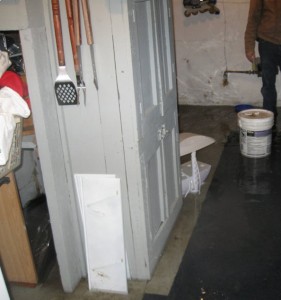What causes burst pipes?
When temperatures fall below 20 degrees, water freezes in pipes.
The frozen water in the pipes causes water pressure buildup between the ice blockage and the closed faucet at the end of a pipe.
Once the pressure builds, the pipes burst at their weakest point – whether it’s outside or inside.
A cracked hose bib outside is no joke!
It can lead to gallons of water flooding your basement . . . as it did for these homeowners in Riverside, NJ.
So the question is, how can you avoid frozen pipes from happening to you?

Pipes in attics, crawl spaces and outside walls are more likely to freeze in extremely cold weather than pipes anywhere else in a building. Other areas that can cause concern are pipes near openings in the outside wall of a building, including where television, cable or telephone lines enter the structure.
To keep water in pipes where it belongs and keep it from freezing, homeowners and business owners can take these 6 easy steps to avoid frozen pipes:
1. Fit exposed pipes with insulation sleeves or wrapping to slow the heat transfer. The more insulation the better.
2. Seal cracks and holes in outside walls and foundations near water pipes with caulking.
3. Keep cabinet doors open during cold spells to allow warm air to circulate around pipes (particularly in the kitchen and bathroom).
4. Keep a slow drip of water flowing through faucets connected to pipes that run through an unheated or unprotected space.
5. Drain the water system, especially if your building is vacant during cold periods.
6. If you have a sprinkler system, make sure you have it blown out every year and the water supply is turned off to the system.
(For the unfortunate owners of this Riverside, New Jersey home, it was this last very important step that was forgotten!)
And remember: For any kind of water loss, time is of the essence to prevent mold from growing! The more quickly the water is pumped out and dried, the less chance there is for mold to grow.
